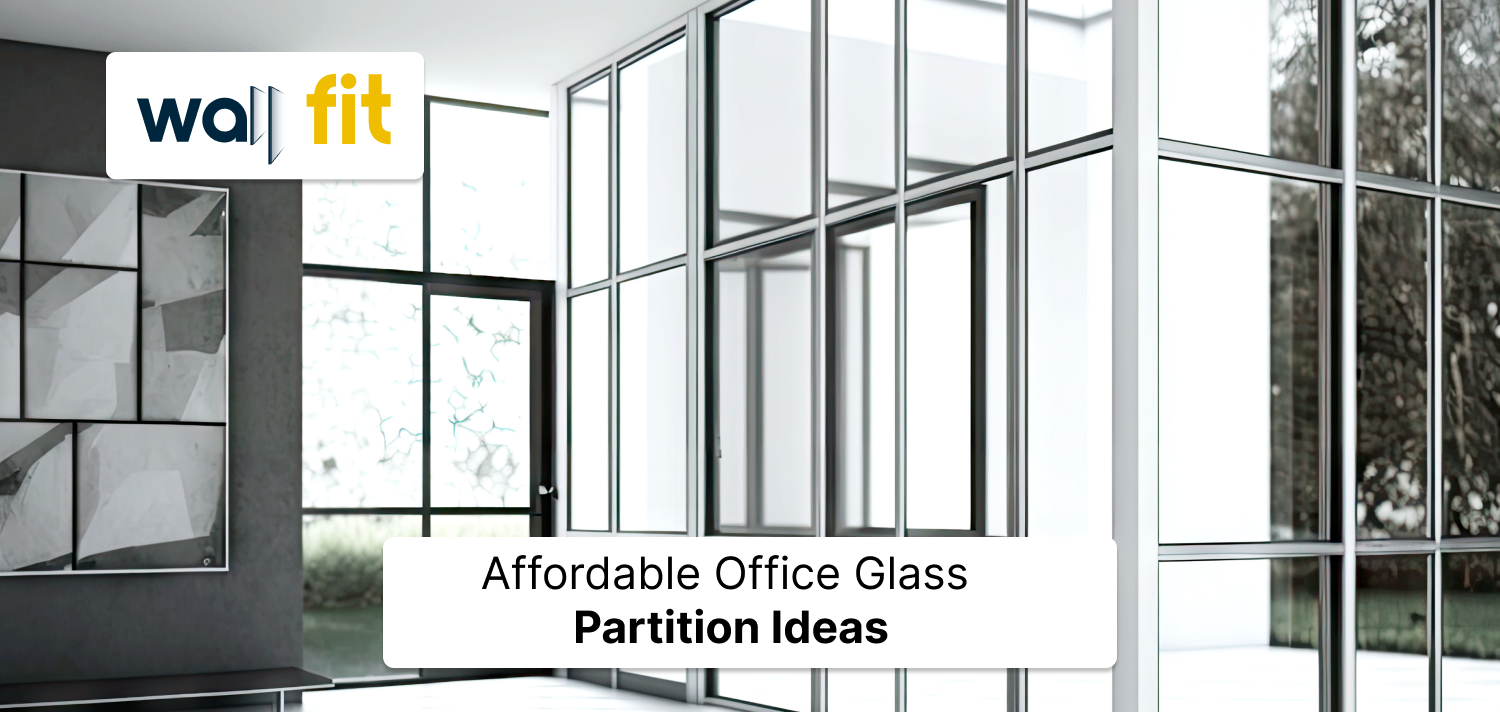
Install Your Glass Wall Partition Office the Easy Way
Home Complete Guide to Installing Glass Wall Partition Office Started With a Small Idea Rajesh was running a startup in
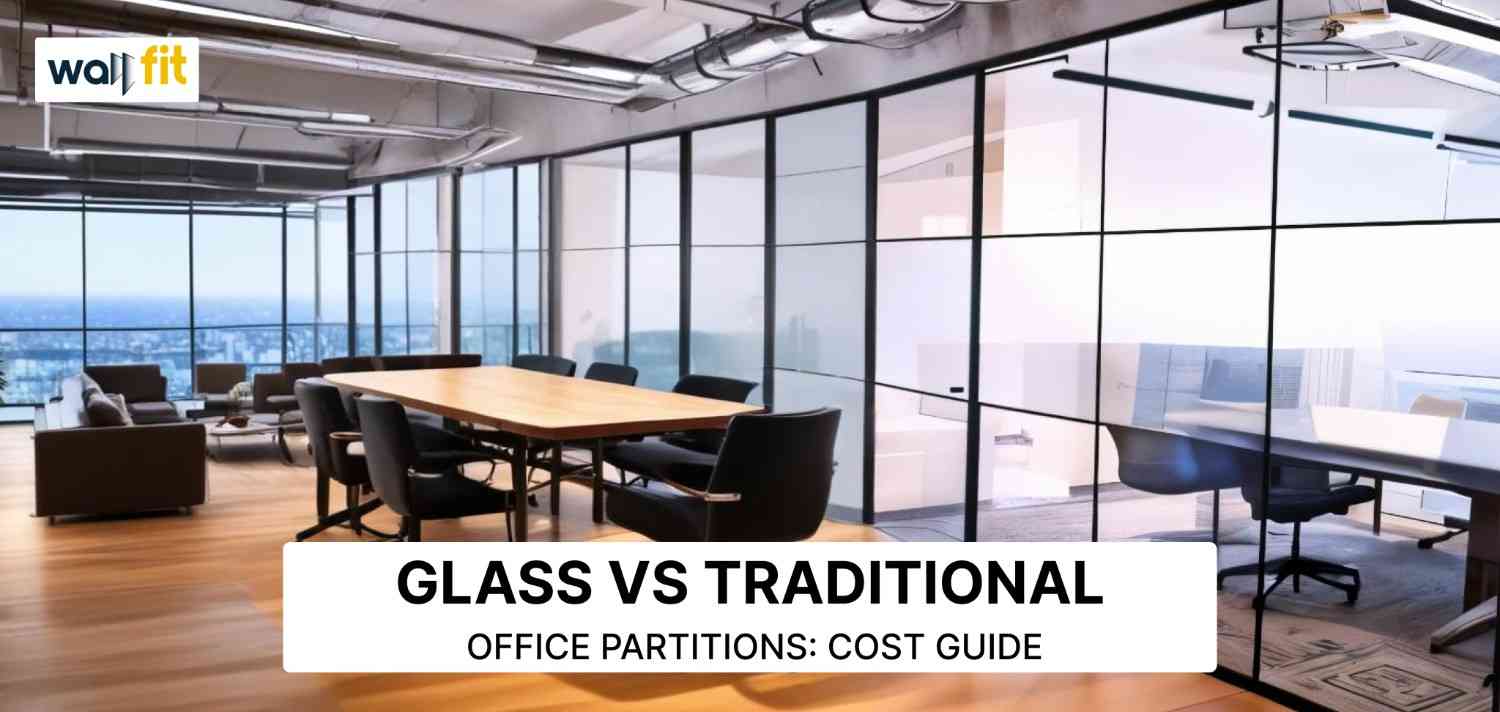
Choosing the right office partition shapes not only your space but also your budget, workflow, and first impressions. Glass and traditional partitions both have strong points, but their costs, looks, and impact on day-to-day function couldn’t be more different. If you’re planning an upgrade or a new build, it pays to understand where your money goes—and what you get back.
This office partition cost comparison breaks down “Glass vs Traditional Office Partitions Cost” from every angle: initial price tags, installation, long-term value, and how each fits your style and team needs. You’ll gain a clear view of which option delivers the best mix of savings, comfort, and appeal for your workplace. For those weighing aesthetics against practicality, you’ll find helpful insights that go beyond the numbers and show what matters most in a modern office environment.
Offices can take on a variety of shapes and sizes, yet the partitioning of these spaces significantly influences their overall layout. Choosing the right partition can open up your workplace, add privacy where needed, or let in more light for a modern atmosphere. To better compare the “Office Partition Cost Comparison, Glass vs Traditional Office Partitions Cost,” let’s first break down what each partition type brings to the table.
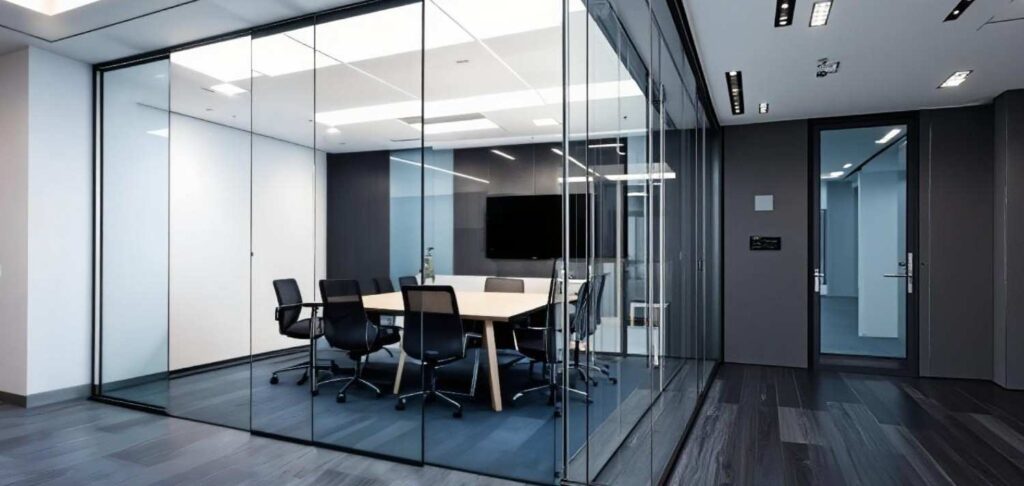
Glass office partitions stand out for their modern look and stylish finish. These partitions are built with toughened glass panels and usually come framed or frameless. You’ll often find them in co-working spaces, executive suites, and offices looking to maximize natural light.
Key features include:
Advantages:
Beyond their looks, glass partitions shape the character of a workspace. Open spaces look even bigger and more inviting. They allow for creative branding too—graphics or logos can be added for a tailor-made feel.
Want to keep up with current interior trends? See fresh ideas in modern office glass partition trends.
Traditional office partitions use materials like drywall, gypsum board, wood panels, and sometimes fabric-covered metal frames. These partitions have been a staple for decades and are found in private offices, call centers, and anywhere privacy is key.
Here’s what sets them apart:
Common materials:
Advantages:
Traditional partitions are a favorite for businesses that prioritize discretion and reduced distractions. Because they block views and dampen noise, these walls work especially well for HR offices, finance teams, or anyone handling sensitive information.
To explore more about partition design and options for specific needs, visit the resource on best office glass partition designs.
As you weigh the office partition cost comparison—glass vs traditional office partition cost—understanding these basic differences helps clarify what you’re really paying for: not just walls, but work style, privacy balance, and office persona.
The real numbers behind office partition costs often surprise people making choices for their workspace upgrade. Whether you’re weighing the modern shine of glass against the reliable privacy of drywall, the upfront price tag covers more than you might think. Both materials and labor play big roles—but add in details like finishes, hardware, or glass film, and you’ll see why every pound matters in this office partition cost comparison. Here’s a closer look at where your money goes right from the start.
What you pay for starts with the materials, and the story here is all about quality, quantity, and finish.
For an even deeper dive into how glass compares with traditional structure, visit this breakdown on comparing glass partitions vs. traditional walls.
It pays to remember: with glass, you’re not just buying walls—you’re investing in daylight, openness, and a modern look that opens up your floor plan. With traditional systems, budget and privacy take the driver’s seat.
Materials are just one side of the coin; labor is the wild card that can make or break your installation budget.
For more insight on what drives installation charges, the guide to three main factors that influence the cost of glass partitions offers a simple breakdown.
Businesses tend to overlook the indirect costs: more time means higher disruption, which can have a real impact on workflow. A glass system’s speedier, dust-free install can keep your team working—a win that offsets the higher daily charge.
If you’re undecided, consider that advanced systems like modular glass partitions offer a hybrid: the elegance of glass, but with fast installation and ease of reconfiguration. To see how modular partitions fit in, explore the latest office design solutions for flexible workspaces.
By breaking out the true costs line by line, this Office Partition Cost Comparison—Glass vs Traditional Office Partitions Cost—shows it’s not just the price per metre that matters. The total, holistic impact of your decision can shape your workspace and your budget for years to come.
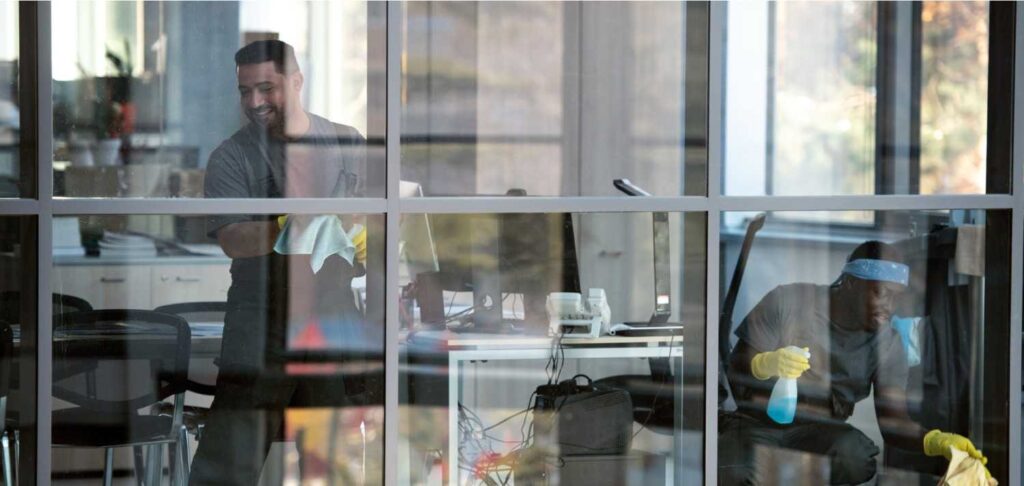
Long-term Costs: Maintenance, Repairs, and Lifespan
The price tag for office partitions isn’t just about the day you install them. Over time, cleaning, repairs, maintenance, and even upgrades start to add up. These “hidden” costs can quietly make one system much more affordable than the other. In this section, you’ll see how glass and traditional office partitions measure up when it comes to staying power, day-to-day upkeep, and what you’ll actually spend on maintenance and replacements for the long haul.
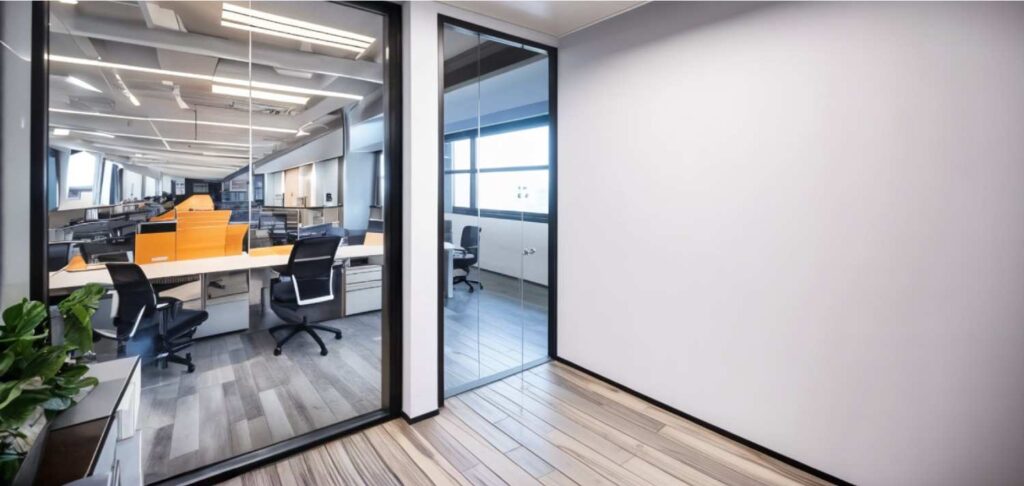
Check out expert tips for maintaining glass partition walls in offices to keep them looking their best.
Key Takeaways:
Office needs change—teams grow, departments shuffle, and spaces often need to be reconfigured. This is where replacement and modification costs matter just as much as the initial build.
A deeper dive into costs of glass partition walls shows real-world price ranges and what affects them.
For businesses interested in lower long-term costs, investing up front in quality partitions pays off. Regular service can significantly delay big repairs and keep operations running smoothly (cost-effectiveness of office partition servicing).
To see how design and upgrade options can keep your office adaptable, view more ideas for versatile office partition designs.
| Feature | Glass Partitions | Traditional Partitions |
|---|---|---|
| Cleaning Frequency | High | Low to Medium |
| Patch & Repair Frequency | Rare (high-impact) | Common (surface-level damage) |
| Lifespan | 20–30+ years | 11–27 years |
| Replacement Cost | High (full panel), rare | Low per incident, frequent |
| Move/Upgrade Flexibility | High (for modular systems) | Low (drywall); Moderate (modular) |
Maintaining an office isn’t just fixing problems—it’s protecting your investment. Thinking about the Office Partition Cost Comparison, Glass vs Traditional Office Partitions Cost, being informed means fewer surprises in your budget and a workspace that lasts.
Beyond installation and repairs, the true “Office Partition Cost Comparison, Glass vs Traditional Office Partitions Cost” extends to factors easy to overlook on a spreadsheet. Energy efficiency, how people feel in the space, and even how your office represents your brand all shape the real value you get from your investment. These hidden costs and returns can be just as important as price tags or paint colors.
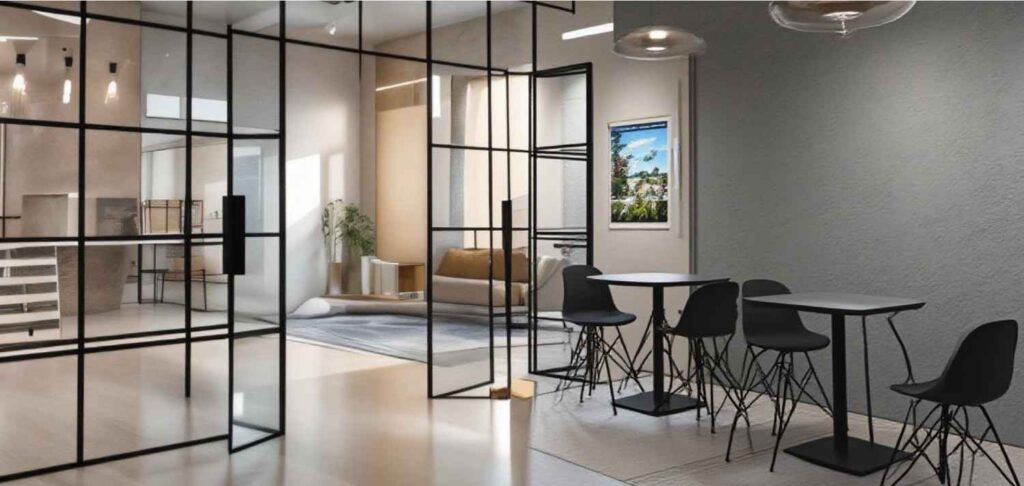
Let’s be honest: How many offices use more artificial lighting than they need? Traditional opaque partitions create pockets of shadow and block out natural daylight, leading to high utility bills and dim cubicles. Glass partitions do the opposite.
Compare this to drywall or gypsum. Partitioned rooms with no windows need their own dedicated lighting—and that can multiply your energy use, especially in deep-plan offices where natural light rarely makes it past the lobby. Glass, on the other hand, acts like a lens, drawing light farther through the workspace.
For a deeper look at how glass partitions reduce running costs and boost sustainability, check out these other benefits of glass office partitions for your business.
If your office vision includes both privacy and daylight, talk to experts about frosted or patterned glass that balances transparency with discretion. Modern glass partition solutions provide privacy while still letting light filter through—see some fresh approaches in the latest modern office glass partition designs for privacy.
Partition choice doesn’t just divide space; it can shape your entire company culture. The right walls—or the wrong ones—directly influence how teams collaborate, how your office feels, and even how clients see your brand.
How partitions affect office appeal and productivity:
Traditional office partitions, such as drywall, give complete privacy, which is critical for some teams. But poorly-planned solid walls can also deaden the workspace, making areas feel cramped, dark, or even outdated. Successful offices balance these effects—using a mix of materials, transparencies, and layouts to shape the right vibe for their missions.
Office layout also affects flexibility. Modern businesses that want to change team setups or support hybrid work models often benefit from modular glass systems, which are easier and faster to reconfigure than traditional drywall.
Key value-adds to consider:
Curious about more creative or hybrid partition strategies? Browse some of the best office glass partition designs for inspiration on blending privacy, daylight, and flexible use.
When you look beyond square metres or daily labor rates, it’s clear that the real value in partition choice lies in the daily impact on bills, people, and your office’s reputation. Factoring in these hidden costs and benefits can completely shift which option delivers true worth for your team and business.
Selecting the right office partitions is a big decision. It affects not only your upfront budget, but also ongoing expenses, employee satisfaction, and future adaptability. Every choice in the “Office Partition Cost Comparison, Glass vs Traditional Office Partitions Cost” has real consequences for your business’s bottom line and day-to-day function. Here’s a breakdown of the essential factors that business owners and managers should weigh for the smartest, most cost-effective outcome.

Immediate Costs and Budget Planning
The upfront cost of your partitions includes more than just the materials. Glass panels might cost more than drywall or modular options, but labor is often faster for glass systems, offsetting some of the added material expense. Consider:
For detailed advice on matching materials to your office needs and budget, look into this guide on how to choose the right office partitions for your budget.
Initial price is just the starting point. Think about long-term durability, cleaning, and what you’ll spend when your workspace needs change.
Take a closer look at average lifespan and upgrade costs by checking references like this breakdown of office renovation and partition upgrade costs.
The right partition system supports productivity, energy, and your visual brand. Ask yourself:
Research shows thoughtful workspace design directly affects morale and output. You can learn more about impacts on employee satisfaction and branding in this guide to choosing office modular partitions.
Markets shift, businesses grow, and today’s conference room could be tomorrow’s brainstorm space. You’ll want a solution that saves you from future costs.
For added insight into optimizing space planning and adaptability, see resources on office partition layout and planning.
To get the best return from your next office remodel, follow these actionable steps:
Looking for more tips on making smart renovation investments? Top professionals advise weighing cost, flexibility, and long-term value, as detailed in this straightforward guide to best budget strategies for office partitioning.
Choosing your next partition system isn’t just about price per metre. For a true office partition cost comparison—glass vs traditional office partitions cost—work out which system will support your goals today, stay efficient tomorrow, and adapt smoothly as your company evolves. That’s how you maximize value, future-proof your space, and enjoy a smart, stylish return on your investment.
Comparing the true costs of glass versus traditional office partitions goes far beyond installation figures. While glass involves a higher up-front spend, its long lifespan, lower maintenance, and flexibility to adapt with your team often lead to better value over time. Traditional systems may offer savings early on, but hidden costs can add up with repairs, regular upgrades, and less efficient use of light and space.
Balancing everyday functionality, natural light, and future adaptability will deliver a workspace that grows with your company while keeping expenses in check. Prioritize broader value—like staff productivity, ease of future changes, and a professional atmosphere—rather than just initial material costs.
For more examples and tips to help you get the most from your investment, visit the collection of insights in the WallFit Partition Blogs. As you make your final decision, consider not only what saves money today, but what will support your team and bottom line for years to come. Thanks for reading—if you’ve gained value from this guide, share your experiences or questions below to help others get it right, too.

Home Complete Guide to Installing Glass Wall Partition Office Started With a Small Idea Rajesh was running a startup in

Home Affordable Office Glass Partition Ideas A Report from a Bangalore Startup Office In 2023, Anil started a digital marketing
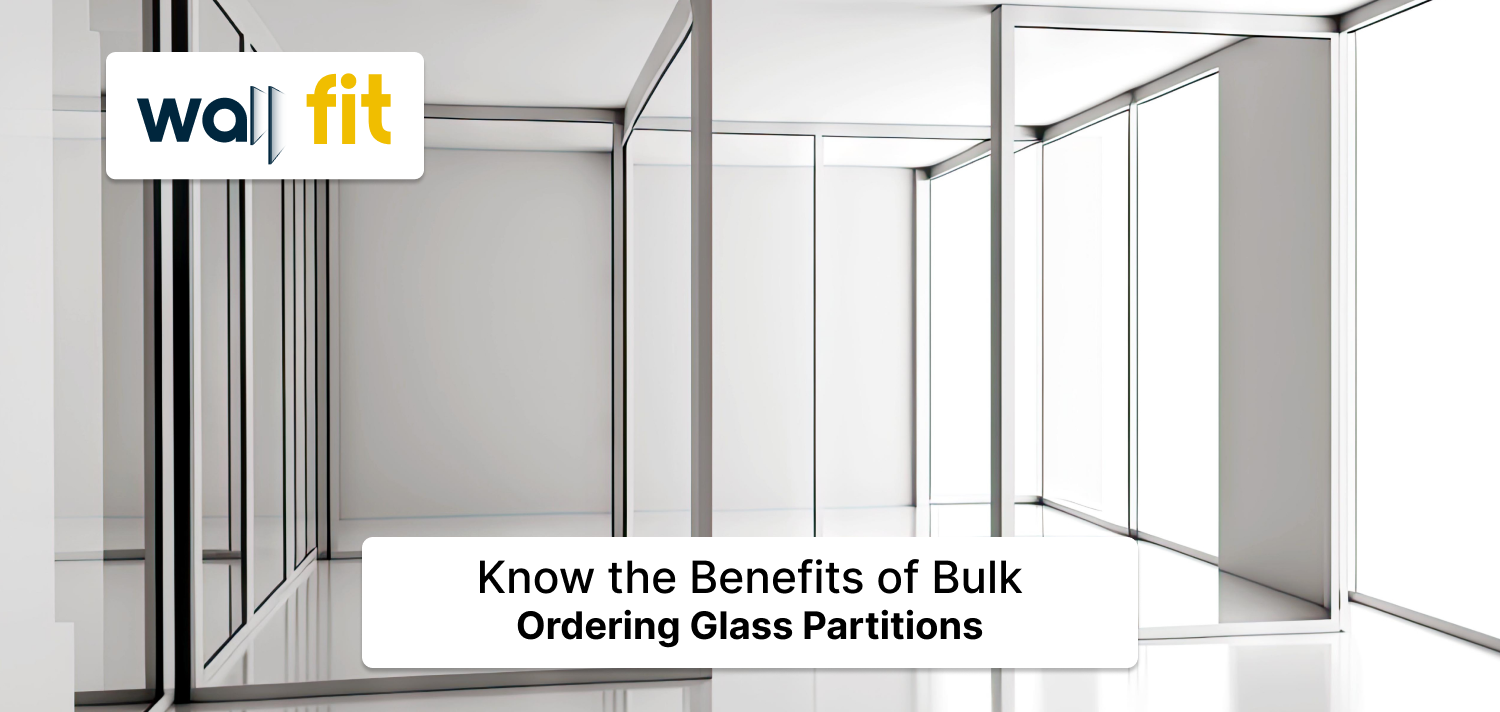
Home Bulk Purchasing Glass Partitions: Benefits and Considerations A Real Story from a Growing Business Ravi had just expanded his